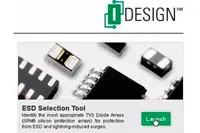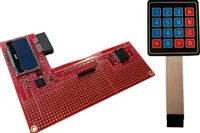Electronics News
Archive : 31 March 2015 год
 IBM is to invest $3billion over the next four years to establish a new Internet of Things (IoT) unit. It will also build a cloud based open platform to help clients and ecosystem partners across industries better integrate real-time data from dispersed sources directly into business operations.
IBM is to invest $3billion over the next four years to establish a new Internet of Things (IoT) unit. It will also build a cloud based open platform to help clients and ecosystem partners across industries better integrate real-time data from dispersed sources directly into business operations.
"Our knowledge of the world grows with every connected sensor and device, but too often we are not acting on it, even when we know we can ensure a better result," said Bob Picciano, senior vice president, IBM Analytics. "IBM will enable clients and industry partners apply IoT data to build solutions based on an open platform. This is a major focus of investment for IBM because it's a rich and broad-based opportunity where innovation matters."
There will be three main planks to the strategy. The IBM IoT Cloud Open Platform for Industries will offer new analytics services, allowing vertical industry IoT solutions to be designed and delivered on the IBM Cloud, an open platform available to those looking to build data driven solutions. For example, IBM will introduce a cloud based service that helps insurance companies extract insight from connected vehicles.
This will be accompanied by the IBM Bluemix IoT Zone. New IoT services, as part of the Bluemix 'platform as a service' concept, will enable integration of IoT data into cloud based development and deployment of IoT apps.
Finally, the IBM IoT Ecosystem will bring in a range of partners – from silicon and device manufacturers to industry oriented solution providers – such as AT&T, ARM and Semtech.
Using industry specific cloud data services and developer tools, IBM says it will build on its expertise to integrate data from IoT and traditional sources, then make it available on an open platform to provide industrial 'makers' and 'operators' with the ability to design and manufacture better connected devices and systems.
Author
Graham Pitcher
Source: www.newelectronics.co.uk
 Micron Technology and Intel say a 256Gbit multilevel cell (MLC) version of their 3D NAND technology is now sampling, with a 384Gbit triple level cell (TLC) design to follow shortly. Initial production runs have started and both devices should be in full production by the end of 2015.
Micron Technology and Intel say a 256Gbit multilevel cell (MLC) version of their 3D NAND technology is now sampling, with a 384Gbit triple level cell (TLC) design to follow shortly. Initial production runs have started and both devices should be in full production by the end of 2015.
Micron Technology and Intel say a 256Gbit multilevel cell (MLC) version of their 3D NAND technology is now sampling, with a 384Gbit triple level cell (TLC) design to follow shortly. Initial production runs have started and both devices should be in full production by the end of 2015.
The 3D NAND technology, jointly developed by Intel and Micron, is said to create storage devices with three times the capacity of competing NAND technologies.
"Micron and Intel's collaboration has created an industry leading solid state storage technology that offers high density, performance and efficiency and is unmatched by any flash today," claimed Brian Shirley, Micron's vice president of memory technology and solutions.
The approach stacks 32 layers of flash cells to achieve 256Gbit MLC and 384Gb TLC parts that fit within a standard package. It also uses a floating gate cell. Because the cells are stacked, each cell can be larger, increasing performance and endurance.
Using these devices, say the partners, standard 2.5in solid state drives with capacities of more than 10Tbyte can be created.
"Intel's development efforts with Micron reflect our continued commitment to offer leading and innovative non volatile memory technologies to the marketplace," said Rob Crooke, general manager of Intel's non volatile memory solutions group. "The significant improvements in density and cost enabled by our 3D NAND technology innovation will accelerate solid state storage in computing platforms."
Author
Graham Pitcher
Source: www.newelectronics.co.uk
 Circuit protection specialist Littelfuse has added an ESD option to its iDesign online simulation and product selection tool. Introduced in 2014 to assist in fuse selection, iDesign now helps circuit designers to select the best TVS Diode Arrays for their application.
Circuit protection specialist Littelfuse has added an ESD option to its iDesign online simulation and product selection tool. Introduced in 2014 to assist in fuse selection, iDesign now helps circuit designers to select the best TVS Diode Arrays for their application.
Users of the ESD selection tool enter parameters on the system settings and device settings pages, after which they can select up to three devices from a shortlist on the device selection page. An analysis page runs simulations that compare the system ESD levels of the selected devices, identifying which one can offer the most robust performance for the application, as well as each part's 'best case' performance.
Chad Marak, director of semiconductor business development, said: "Selecting the right ESD protection components and verifying their performance used to be an expensive, time consuming and often incomplete process because the protection device was not considered in relation to the device it was protecting. The ESD tool eliminates searching through datasheets for parametric information or incompatible simulation files because it can access our TVS diode array product database, perform the calculations and simulate device performance automatically."
Marak said the database had been created independently, with Pragma Design building simulation models from measurements captured by Barth Electronics.
Once the best device has been selected, users can download the datasheet and save the analysis page as a PDF. A further option is to order a sample or to buy from distributor's websites.
Author
Graham Pitcher
Source: www.newelectronics.co.uk
 Farmell element14 has unveiled the GIZMO Explorer board, said to be a companion board for the GIZMO 2 platform. The board includes features and peripherals that suit it to use in motor control, human machine interface and control system designs.
Farmell element14 has unveiled the GIZMO Explorer board, said to be a companion board for the GIZMO 2 platform. The board includes features and peripherals that suit it to use in motor control, human machine interface and control system designs.
Farmell element14 has unveiled the GIZMO Explorer board, said to be a companion board for the GIZMO 2 platform. The board includes features and peripherals that suit it to use in motor control, human machine interface and control system designs.
According to Farnell, the board is the only one of its kind to offer a keypad, LCD, motor control hardware and a prototyping area. The board connects to the GIZMO 2 platform via the low speed expansion connector.
Motor control applications for board range from robotics to antenna rotators, as well as speed, direction or position control. Interface applications include operator interfaces, household appliances and office equipment.
Author
Graham Pitcher
Source: www.newelectronics.co.uk
 Sheffield based SRAM developer sureCore is to collaborate with Belgian research centre imec on low power SRAM IP. Under the agreement, sureCore will license some of imec's SRAM design IP, whilst imec will make what is called a 'participation' in sureCore, which will establish an office in Leuven.
Sheffield based SRAM developer sureCore is to collaborate with Belgian research centre imec on low power SRAM IP. Under the agreement, sureCore will license some of imec's SRAM design IP, whilst imec will make what is called a 'participation' in sureCore, which will establish an office in Leuven.
"This collaboration is strategically very significant for us," said Paul Wells, sureCore's CEO. "This will enable expertise to be pooled and shared to drive forward the development of low power SRAM IP solutions. Imec has world renowned silicon process expertise and an extensive IP portfolio that we will access."
"We are convinced of the effectiveness of sureCore's SRAM IP technology to solve the power issues of next generation wearable electronics and IoT applications, where extending battery life is crucial. It is also valuable in the networking space, where power and heat dissipation are critical considerations," said Ludo Deferm, pictured, imec's executive vice president of corporate, business and public affairs.
Guillaume d'Eyssautier, sureCore's Chairman, claimed 'a discontinuity in Moore's Law means that 1million transistors will cost more and consume more power at 20nm than at 28nm'. "As a result, for many applications, 40/28nm bulk CMOS, as well as 28nm FDSOI, will be cost effective for a long time and being able to cut power consumption with better SRAM IP will make a significant commercial difference."
Author
Graham Pitcher
Source: www.newelectronics.co.uk

